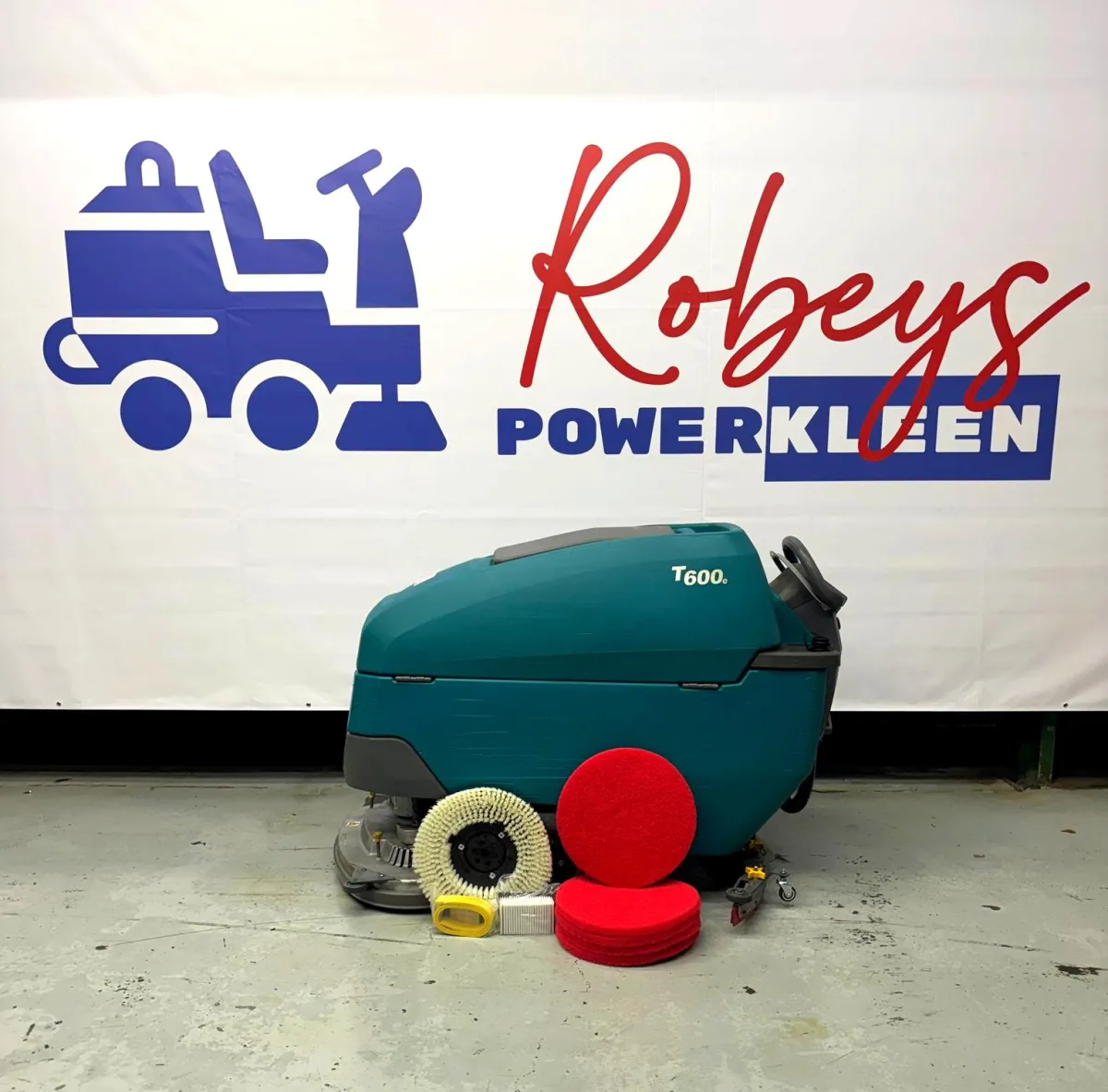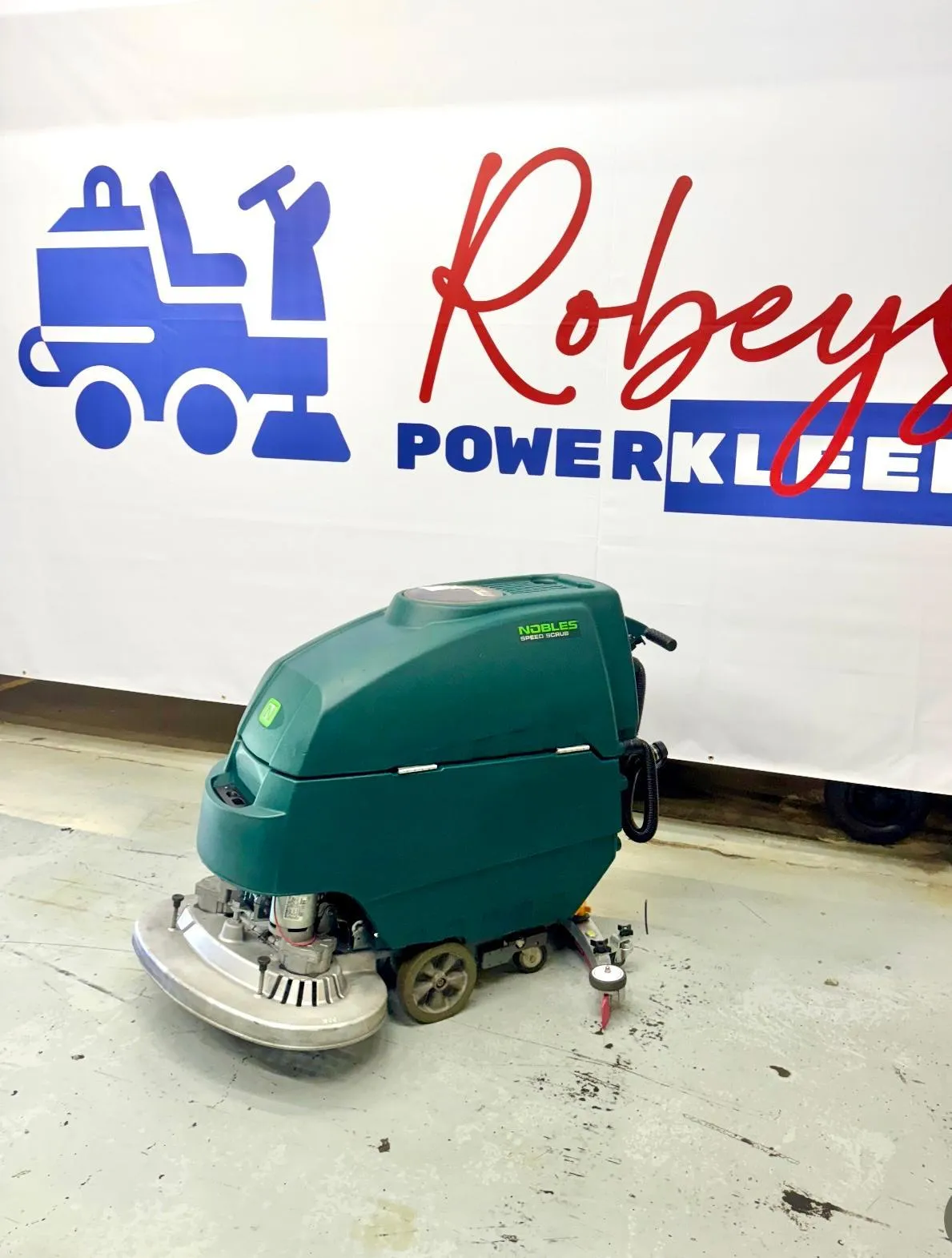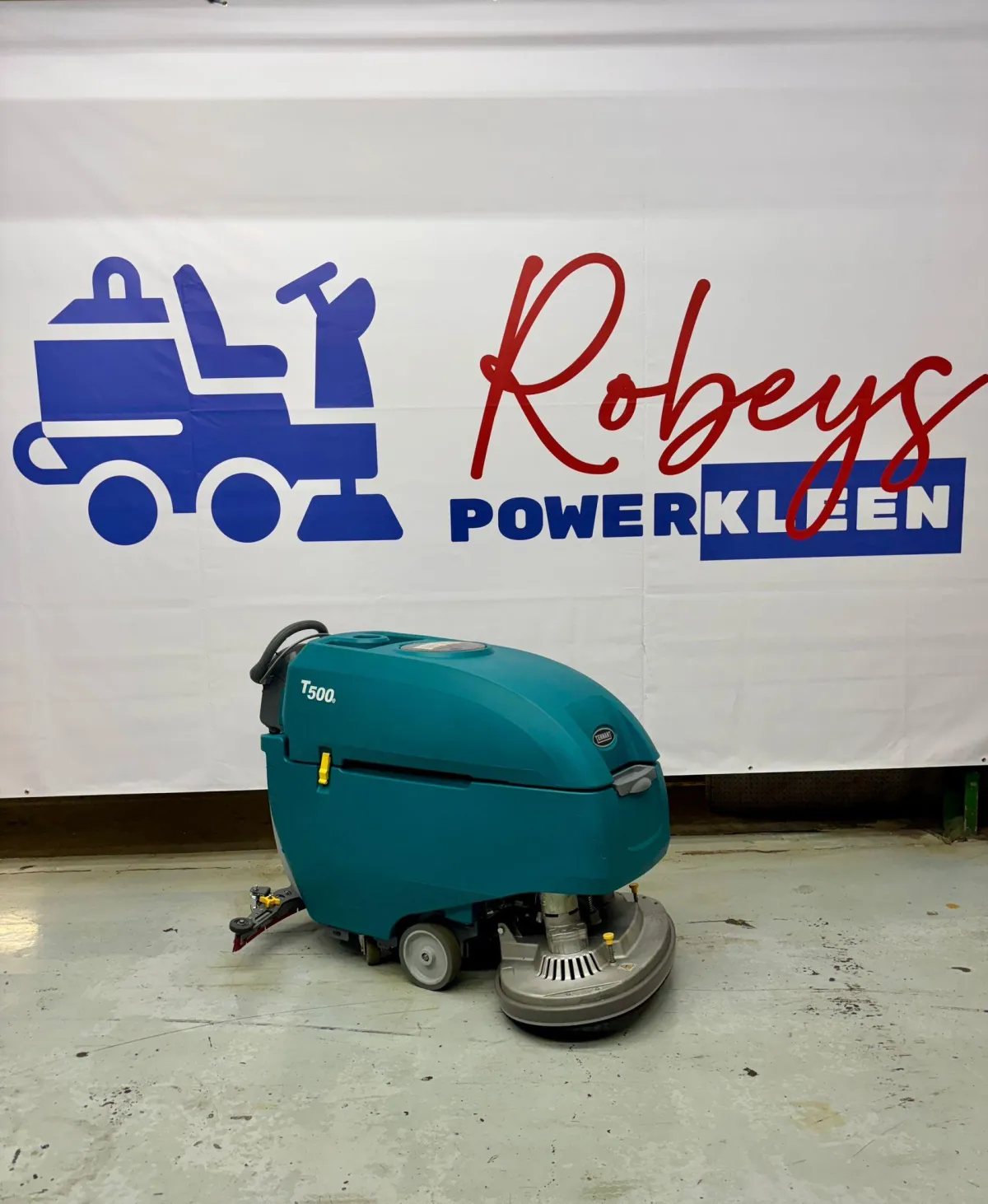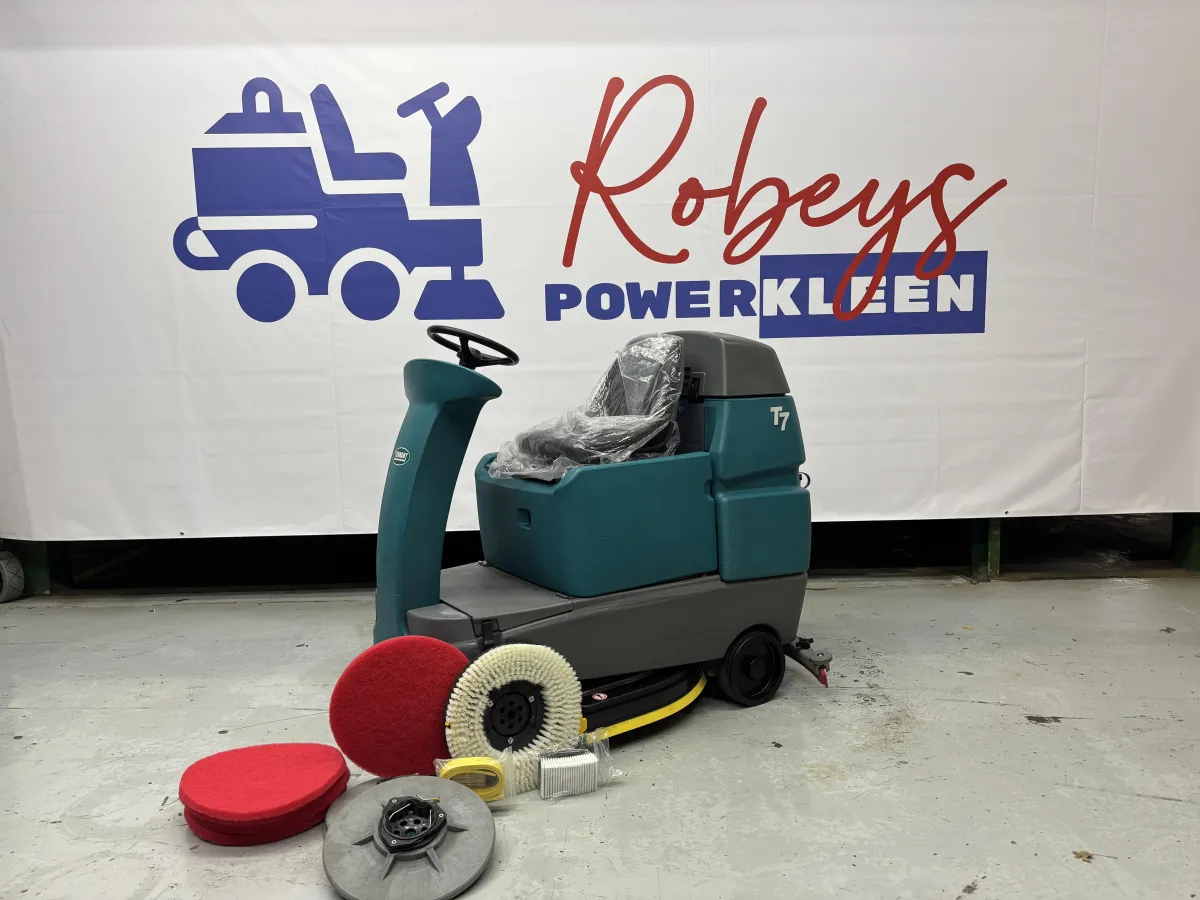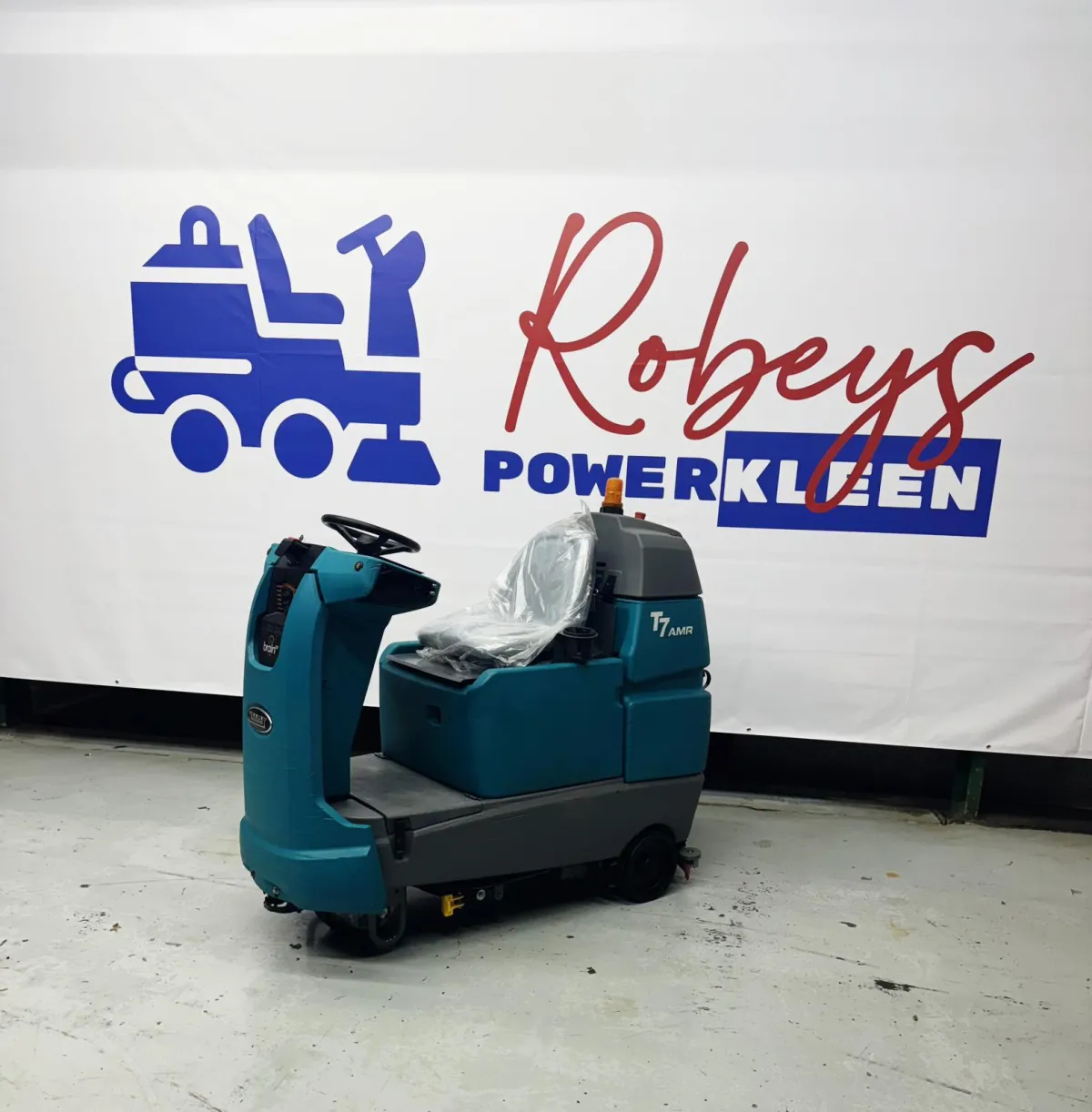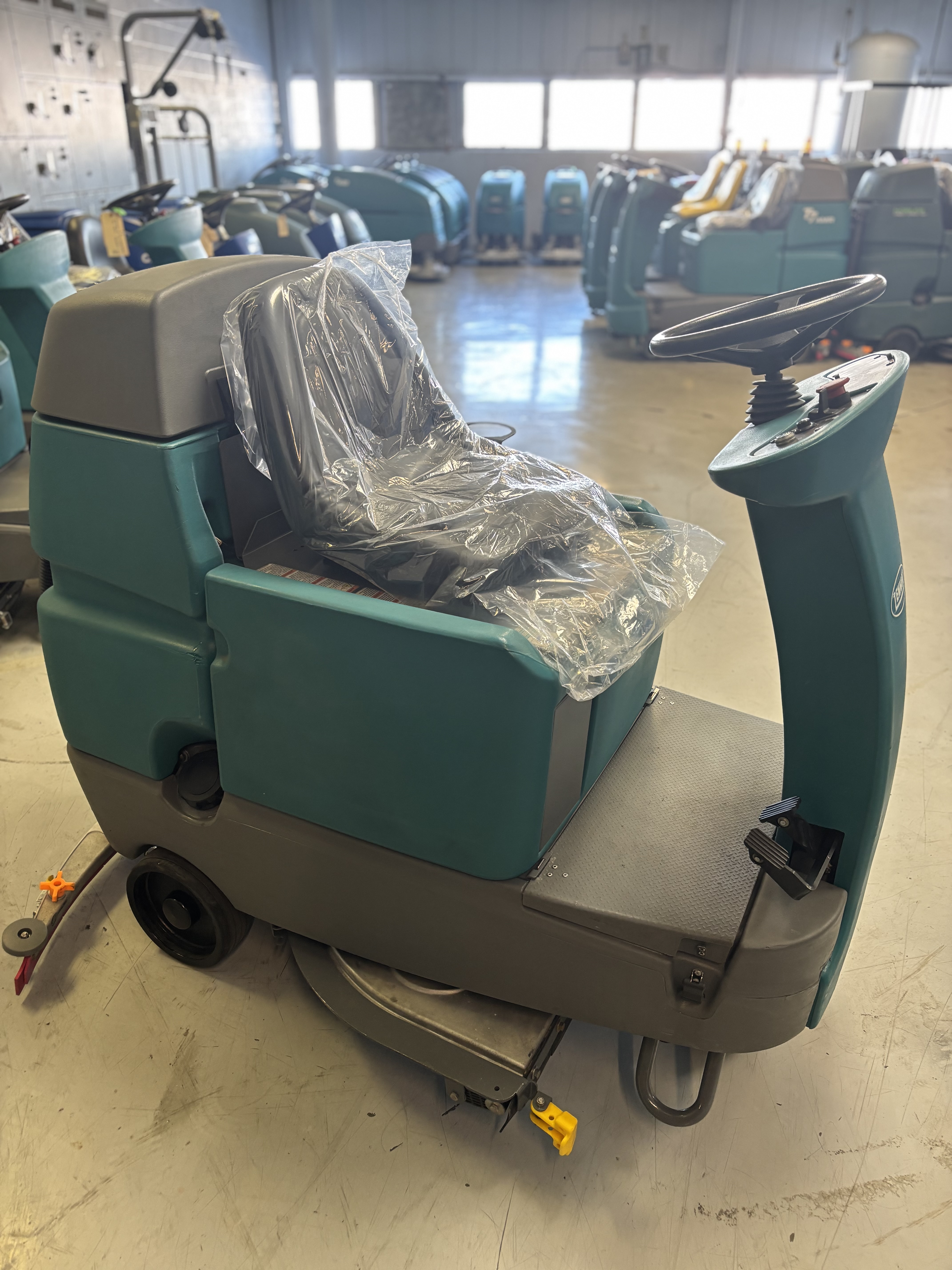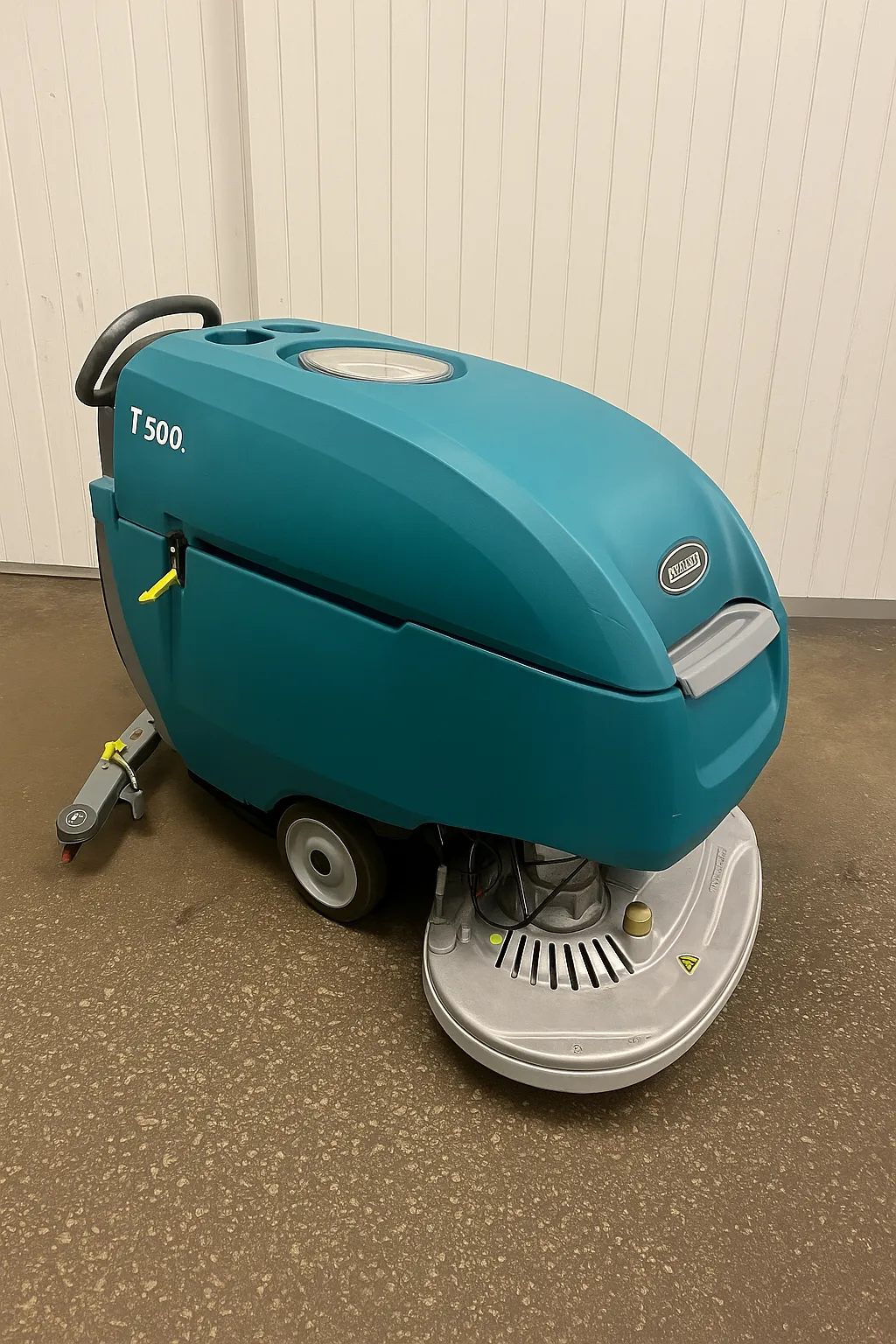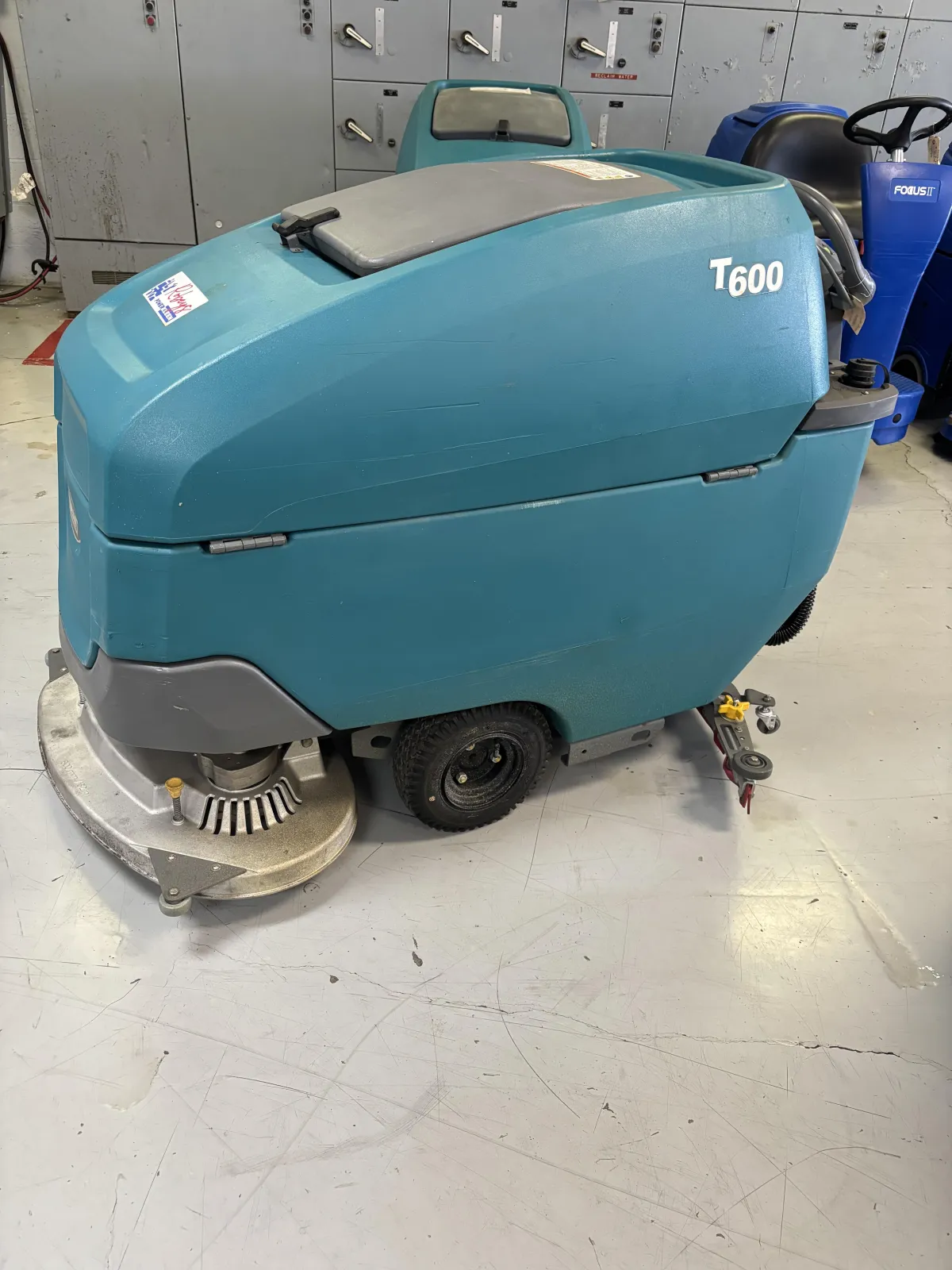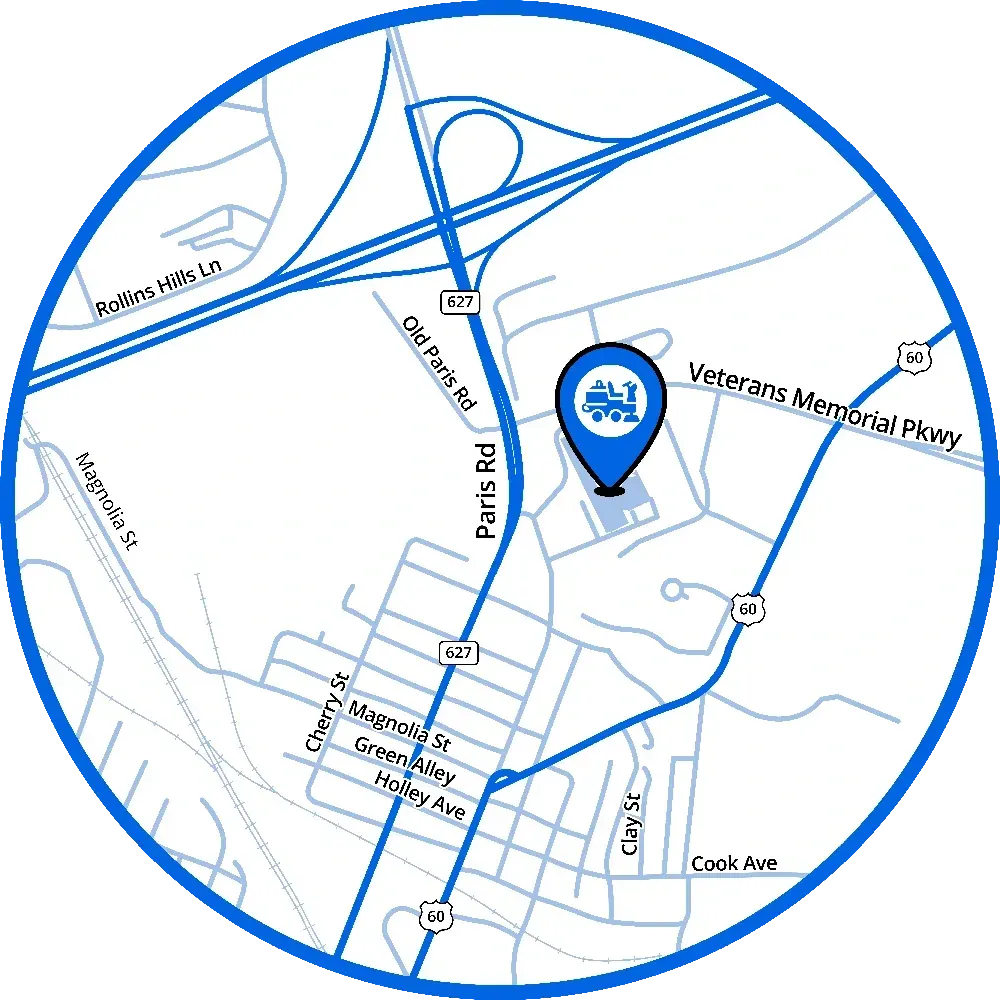Contact Robey's Powerkleen at (859)-484-7337
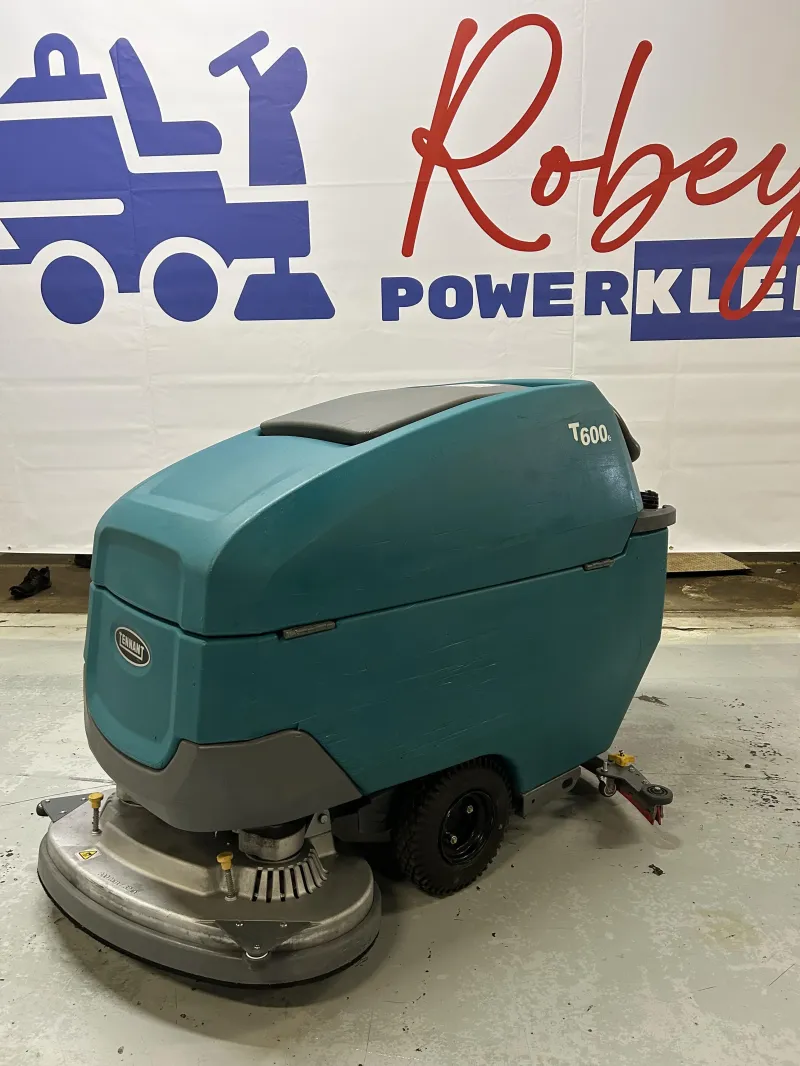

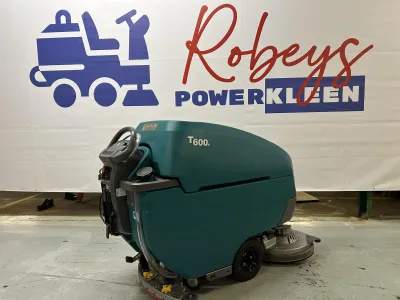
Tennant T600e Walk-Behind Floor Scrubber
$325.00
Duration
Quantity
Frequently Asked Questions
What width floor scrubber should I choose?
A 26-inch machine can fit through standard doorways, making it a versatile option for most spaces.
A 32-inch machine, however, is too wide to pass through standard doorways, so it's better suited for open areas.
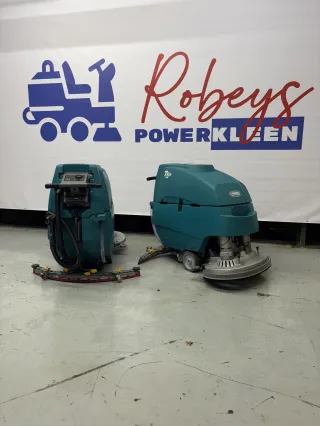
What are pads & pad drivers?
A pad on a floor scrubber is a replaceable, disc-shaped cleaning attachment that makes direct contact with the floor to perform tasks such as scrubbing, buffing, or polishing. In contrast, a pad driver is the component that securely holds the pad in place, allowing it to rotate and effectively clean the floor. Essentially, the pad driver serves as the connection between the cleaning pad and the machine.
Key Differences Between Pads and Pad Drivers:
Function:
Pads vary in texture and abrasiveness based on the cleaning task, whether it's scrubbing tough dirt, polishing, or stripping old floor finishes.
Attachment:
The pad driver features a gripping surface (often with Velcro-like material) to keep the pad securely attached to the scrubber during operation.
Types of Pads:
Pads come in different colors to indicate their purpose—for example, blue for general scrubbing, white for polishing, and black for stripping.
For this Product - A red buffing pad is slightly more abrasive and designed for general cleaning tasks, such as removing light scuffs and stains. In contrast, a white buffing pad is the softest option, primarily used for polishing and achieving a high-gloss finish on floors. Among all pad colors, white is the least aggressive.
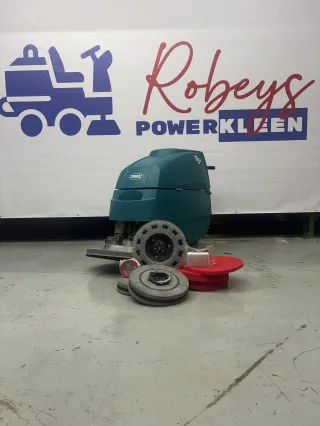
What battery should I choose?
The primary difference between a small and large lithium battery pack on a floor scrubber is its capacity, or the amount of power it can store. This directly affects how long the scrubber can operate on a single charge—a larger battery pack provides longer runtime before needing a recharge.
Key Factors to Consider
Cleaning Area:
Larger spaces generally require a bigger battery pack to support extended cleaning sessions.
Work Intensity:
If scrubbing heavy dirt or rough surfaces, a larger battery pack may be more efficient.
Charging Time:
While bigger batteries may take longer to recharge, their extended runtime often makes up for this.
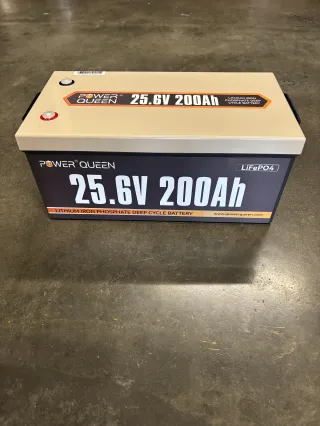
What scrub brush is right for me?
A poly blend brush bristle on a floor scrubber is primarily made from polypropylene, which is stiffer and more abrasive than a nylon blend brush bristle. Nylon bristles are more flexible and gentler, making them better suited for softer floors, while polypropylene is ideal for hard surfaces like concrete. Both materials are synthetic and can be blended with other fibers to enhance specific cleaning properties.
Key Differences Between Poly Blend and Nylon Blend Bristles
Poly Blend Bristles:
Stiffness: Rigid and abrasive, ideal for heavy-duty scrubbing on hard floors.
Durability: More economical but may wear out faster than nylon.
Chemical Resistance: Highly resistant to chemicals, fungus, and bacteria.
Nylon Blend Bristles:
Flexibility: Softer and more flexible, making it suitable for delicate floor surfaces.
Durability: Longer-lasting than polypropylene, with better resistance to heat and chemicals.
Cleaning Power: Still provides effective scrubbing for general cleaning tasks.
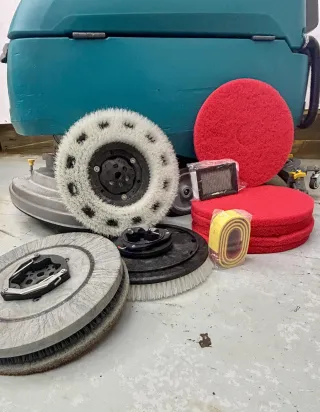
See Our Trending Products
Shop by Scrubber Categories
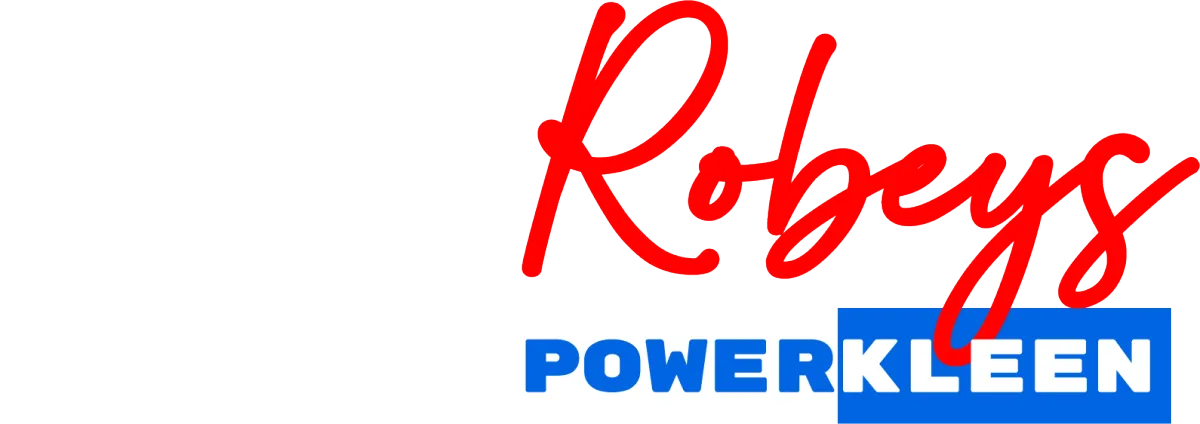
695 N Main St., Winchester, KY 40391
Copyright ©2025 Robeys PowerKleen Floor Machines. All Rights Reserved.
Powered by FirstDirect360
Designed by First Direct
